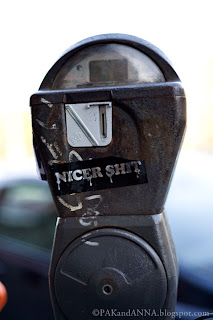
With the holiday season comes the annual Hollywood lineup of Oscar contenders. The soon to be released Revolutionary Road, directed by Sam Mendes certainly seems like the proper dose of medicine during this time of manufactured cheer. The film is based upon Richard Yates' critically acclaimed novel, first published by Little, Brown and Company, Boston, 1961. It was subsequently selected as one of Time Magazine's 100 best English-language novels from 1923 to the present.
Revolutionary Road follows the lives of Frank and April Wheeler, an outspoken married couple (with two children) entering their thirties who have taken the well-traveled route of slowly transforming themselves from aspiring bohemians in New York City to living what seems in their minds to be a spirit-crushing existence in suburban Connecticut. The characters speak often of fighting conformity and living a meaningful existence of art and intellectual pursuit, but talk as they say is cheap. Near the end of the book, a shocking act by April Wheeler jolts readers to attention. Alas, it was already too late to rescue Frank from his chosen path of "mediocrity".
Here are a few passages:
"Intelligent, thinking people could take things like this in their stride, just as they took the larger absurdities of deadly dull jobs in the city and deadly dull homes in the suburbs. Economic circumstance might force you to live in this environment, but the important thing was to keep from being contaminated. The important thing, always, was to remember who you were."
"The point is it wouldn't be so bad if it weren't so typical. It isn't only the Donaldsons - it's the Cramers too, and the whaddyacallits, the Wingates, and a million others. It's all the idiots I ride with on the train every day. It's a disease. Nobody thinks or feels or cares any more; nobody gets excited or believes in anything except their own comfortable little God damn mediocrity."
"... Look at it this way. I need a job; okay. Is that any reason why the job I get has to louse me up? Look. All I want is to get enough dough coming in to keep us solvent for the next year or so, till I can figure things out; meanwhile I want to retain my own identity. Therefore the thing I'm most anxious to avoid is any kind of work that can be considered 'interesting' in its own right. I want something that can't possibly touch me. I want some big, swollen old corporation that's been bumbling along making money in its sleep for a hundred years, where they have to hire eight guys for every one job because none of them can be expected to care about whatever boring thing it is they're supposed to be doing. I want to go into that kind of place and say, Look. You can have my body and my nice college-boy smile for so many hours a day, in exchange for so many dollars, and beyond that we'll leave each other strictly alone. Get the picture?"
"Wow," he said. "Now you've said it. The hopeless emptiness. Hell, plenty of people are on to the emptiness part; out where I used to work, on the Coast, that's all we ever talked about. We'd sit around talking about emptiness all night. Nobody ever said 'hopeless,' though; that's where we'd all chicken out. Because maybe it does take a certain amount of guts to see the emptiness, but it takes a whole hell of a lot more to see the hopelessness. And I guess when you do see the hopelessness, that's when there's nothing to do but take off. If you can."
Mr. Yates' characters in Revolutionary Road certainly ring true and over the years, I feel that I have met a thousand other discontented Frank and April Wheelers in real life. What do you see when you look into a mirror? Whether you want to be a writer, a dancer, an actor, or a painter...ask yourself, do you have the strength and courage to see it through? Talk, romance, and even money carries you only so far. LIFE is known to field a hell of an opposing team. - PS








































